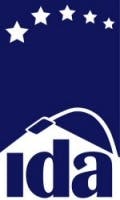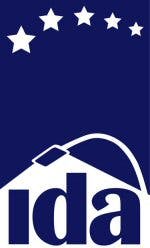Brian K. Owen: Myself, and readers of LEDs Magazine, have recently noticed that IDA has been promoting various conferences and seminars on Light and Human Health. Can you explain the purpose of this?
Peter Strasser: It’s not that we are “promoting” the events; rather we are saying that these medical and research-based conferences and seminars are taking place and are becoming more topical. We are informing our members, the lighting community and end-users of outdoor lighting that they should attend and see the findings of the research for themselves. This would allow them to make their own determination, rather than making assumptions and unsubstantiated conclusions.
By notifying the masses that the New York and Philadelphia symposia were taking place, we simply suggested that if concerned parties are scrambling to derive some meaning from what the doctors have said, it is a good idea to go to one of these places and hear what the doctors have to say.
No interpretation should be made as to any motive on the part of IDA, other than simply recommending getting the straight talk from the horses’ mouths, so to speak.
BKO: Can you give us a recap from recent events and findings?
PS: Both the New York and Philadelphia symposia on circadian disruption were filled with new findings, yet important elements are still unknown. Much new research was presented, and much more remains to be done.
BKO: What have you seen from research to date?
PS: Previous research on light at night and human health has produced data that has been widely and “wildly” interpreted. Discussion of the results from previous experiments has been imbued with impassioned speculation and conjecture.
BKO: What do you see as “missing information” and the “next steps”?
PS: The critical elements missing from the light-at-night and circadian-disruption data are intensity, spectral power distribution, and duration of exposure. These three elements must be determined before cogent recommendations can be made. Anyone can argue that it is better to err on the side of caution. This concept has both precedent and merit. However, that can be a default protocol for any situation. To say it must be done means to ignore any and all potential cost. But to ignore the partial information could place potential liability at the hands of those making the decisions. The argument then becomes “you were warned,” to be countered by “not warned enough.” Now is the time for data and information, and we are hopeful that this continuing research will someday provide it.
BKO: What official position has IDA taken in this very controversial issue?
PS: IDA has produced a draft document on Light and Human Health concerns. It is presently under board review, but will most likely remain essentially the same [as at present]. IDA is not overstepping the results of the scientific findings and making direct correlations. Further research is still being done.
BKO: Can you provide a synopsis of the draft IDA Position Statement?
PS:The IDA recognizes that excessive artificial light at night is potentially detrimental to human health, and therefore encourages efforts to minimize glare and stray light from outdoor lighting in sleeping areas.
BKO: What are the recommendations of the IDA?
PS: The three main ones are as follows:
- Minimize all light at night in sleeping areas.
- Control outdoor lighting using shades, shields and lighting controls so that the light is provided only where and when required.
- Design and modify outdoor lighting systems so that stray light and glare from lighting on public roads or light originating beyond property lines and trespassing onto adjoining properties is eliminated.
BKO: Thank you.
End notes
It is certain that Light and Health will again be a topic of discussion at this year’s IES Street and Area Lighting Conference (SALC), to be held in Philadelphia on September 13-16 at the Loews Philadelphia Hotel. LEDs Magazine will be at the SALC and will bring you the latest news from the IES. Later this week, LEDs Magazine will bring you a preview of the SALC.
For more information about the IDA, visit www.darksky.org or contact Peter Strasser at 520.293.3198.
For more information about the IES SALC, visit www.ies.org or contact Valerie Landers at 212.248.5000 x117.






